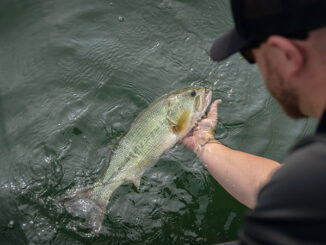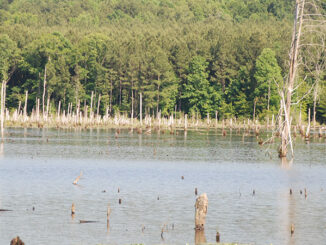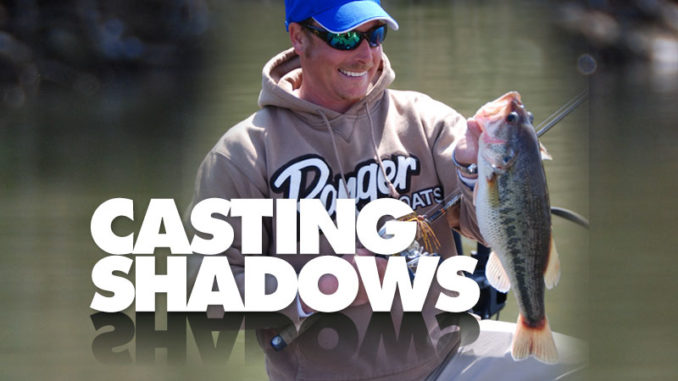
According to bass pro Bryan Thrift, the fall bass pattern in the Carolinas isn’t what you might expect it to be. Here’s how to make it work when September arrives.
Most descriptions of fall bass fishing start out talking about how changes in the weather will affect the bite.
This is not one of those stories.
In fact, according to bass pro Bryan Thrift of Shelby, N.C., it’s often hard for Carolina anglers to tell when summer ends and when fall begins.
Thrift, who has fished both Carolinas extensively throughout his professional career — he’s a two-time FLW Angler of the Year — said most years the weather just goes right on being hot and miserable into the fall pattern, yet every year he still sees and believes that bass transition into a “fall bite.”
“The days start getting shorter,” Thrift said. “I think this signals to both bass and bait that it’s time for a season change, whether the weather cooperates or not.”
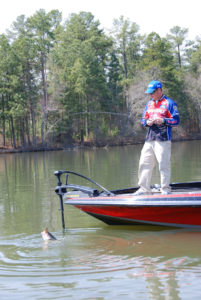
Thrift’s biggest indicator that bass are or should be moving into the fall pattern is seeing signs of life back in the shallows. For most of the summer, both bass and baitfish, the latter primarily threadfin shad, reside in deep, offshore waters, but they start making a definitive move into shallow water as August turns to September.
“The water can cool off a degree or two at night; that’s all it takes, but I really believe that happens because the duration of sunlight is less now than it was a month ago,” he said.
To test his theory, Thrift will motor to shallow areas, which might be near the mouth of a tributary or further back in one, then cut off his outboard motor and spend five or 10 minutes observing the area around his boat.
“I’ll just sit quiet; I’m really not even watching the graph, just looking at the surface of the water, watching for a couple of shad to flip or to see some of that nervous water that indicates a school of bait is just below the surface,” he said.
Once he’s convinced the baitfish migration has begun, he will approach it with three patterns in mind: two shallow and one offshore.
The first is a topwater bite, and he comes armed with a buzzbait and a walking bait, both of which allow him to cover a lot of water. His preference is a Damiki Rambler walking bait and a Damiki MTB Noisy buzzbait.
“I’m going to use a white buzzbait and a shad-colored walking bait,” he said. “I’m targeting schooling bass, the first ones that are reacting to the bait moving up.
He typical starts in shallow water near the mouth of a tributary creek and works his way back. He said the bass he catches on the topwater lures are often fickle fish, but also bigger fish.
His other shallow-water strategy is a subsurface presentation. He’s still targeting shallow water near the bank, except he’s going to target bass that are holding on structure, like a laydown or a boat dock.
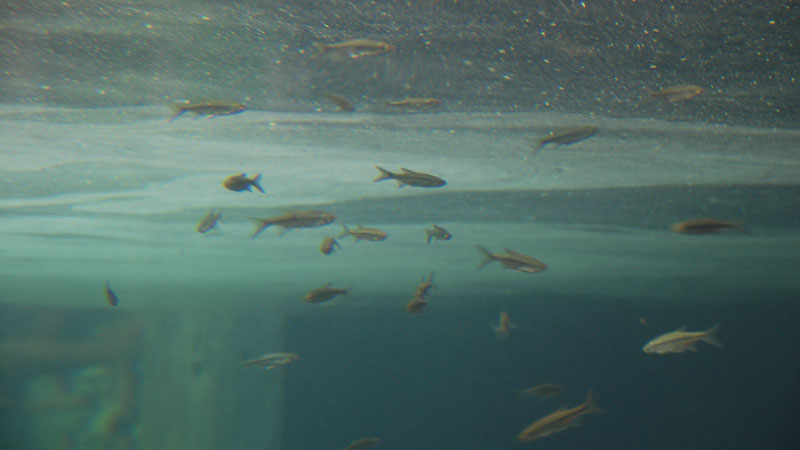
“I believe these are the same fish that are following the baitfish to the bank,” he said. “Maybe they’re just resting or waiting for the baitfish to wander past them, but they’re usually about the same size bass as what I’d expect to catch on top.”
Thrift’s sub-surface arsenal includes a shallow-diving, square billed crankbait and a jig with a crawfish trailer. He looking to pick up a few more bites from structure-oriented fish in the same area where he’s seeing baitfish on the surface but where bass are not actively chasing bait.
Thrift will stick with a natural/baitfish paint job on the crankbait, but he picks the jig/trailer combo based on the color of the water. If the water is dirty, he’ll pick a high visibility chartreuse trailer. In clear water, he’ll stick with white or pearl.
His third strategy relies on offshore fish. Thrift makes the distinction here between shallow water on the bank and shallow water away from the bank.
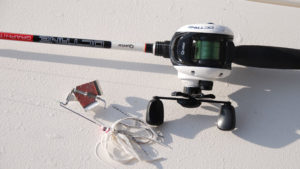
“It’s not necessarily deep water, it’s just away from the bank,” he said. “It’s not that I think all the bass have moved shallow yet. I know they haven’t, but in deep water, you’ve got issues wondering if the water is turning over or if the fish have moved up or stayed down in the water column.”
“The shallow-water bite is more predictable. No turnover, no guessing at depth. Not all the bass are going to move to the bank; that’s why I call this an offshore pattern rather than a deep-water pattern,” he said.
Baits are the same as his subsurface pattern. He’s going to look for stumps, brush piles or even ditches that are away from the bank — and most likely toward the back of a creek — that are holding bass.

